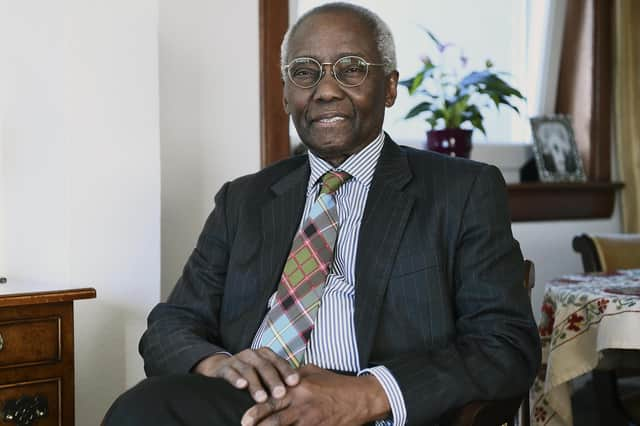Anti-racism campaigner from Penicuik hits back at critics


Sir Geoff Palmer OBE, a professor emeritus in the School of Life Sciences at Heriot-Watt University, has been appointed by Edinburgh City Council to lead the Edinburgh Slavery and Colonialism Legacy Review Group.
The group will investigate the street names, monuments and buildings of the capital, and according to Sir Geoff, will provide educational resources to ‘provide people with information about their city’, rather than removing statues and changing place names.
Advertisement
Hide AdAdvertisement
Hide AdDespite this, some commentators have heavily criticised Sir Geoff and the review group after a leaked draft list of places and monuments that could be subject to review was leaked.
Contrary to some reports, the list, which is a draft compilation of possible review subjects submitted by individual members of the group, is not an agreed list of place names and monuments to investigate – that list is set to be agreed when the group meets on March 15.
The leaked document listed Adam Smith’s grave, in Canongate Kirkyard, as a possible contender for investigation, due to Smith’s apparent acceptance of slavery as ‘inevitable’ – although he was a fierce critic of the practice and condemned it.
Matt Kilcoyne, the deputy director of neoliberal think tank the Adam Smith Institute, accused Sir Geoff of trying to ‘wipe Adam Smith out of history’, writing: “I condemn in unequivocal terms the moves by some on Edinburgh Council to try and wipe Adam Smith out of history. His record on slavery is one of condemnation, he wrote the moral case and the economic case against it. Adam Smith’s record is readable and redoubtable.”
Advertisement
Hide AdAdvertisement
Hide AdSir Geof Palmer has reiterated his belief that some commentators are misrepresenting what he’s trying to accomplish, saying: “I was one of the only people saying don’t tear our statues down, which is the irony of Twitter accounts like Save Our Statues attacking me. I’ve said it quite clearly – the next statue down in our country should be racism. If you remove the statue you remove the deed, and our statues are in the context of our history.”
He added: “So where Dundas is, it is in the context of St Andrew Square, it is in the history of St Andrew Square, it is linked to Dundas Road across the street.
“It is linked to Henry Brougham, the abolitionist, who lived in St Andrew Square.
“So if you start removing things from their context, then in 100 years time we will have forgotten this historical context.
Advertisement
Hide AdAdvertisement
Hide Ad“It’s also important because the reasons why Dundas’ statue was put there are important, and therefore we cannot remove history from its context.”
Commentator Paul Staines, who runs the right wing politics website Guido Fawkes, also tweeted in the belief Smith’s statue was under threat, writing: “Of all the statues not to tear down, Adam Smith, who argued against the consensus of the time, that slavery was immoral, is surely the one.
“That he did not win the argument in his lifetime is no reason to defile his grave.”
Sir Geoff also says his work on BAME history will help fight racism in the present: “What I would like to see is the Scottish people, with this remit, will understand their history better.
Advertisement
Hide AdAdvertisement
Hide Ad“They will come to understand the truth of the link between Edinburgh and it’s relationship with slavery. We’re going to do this by giving them the evidence.
“Street names for example – we know that Balcarres Street, named after Earl Balcarres, was Henry Dundas’ governor of Jamaica, and he owned slaves and enslaved them.
“We’re also going to look at the New Town, we’re going to look at the streets and roads in the New Town, and many of these streets are on the compensation list – the people who lived there got compensation for their slaves.
“We’re going to look at statues and monuments of people who are linked to slavery and colonialism. We’re going to provide people with information about their city.
Advertisement
Hide AdAdvertisement
Hide Ad“That information will not be prejudicial, it is not going to be there to denigrate, it is there to give the public information about their city and its links with slavery and colinialism.
“We will then have a document, which is evidence-based, that can be used for educational purposes in order to say to the public that when you look at a BAME person in our society, they have a right to be here.
“They were part of the British Empire, they worked and they died for it and therefore we are all now one Scotland.”